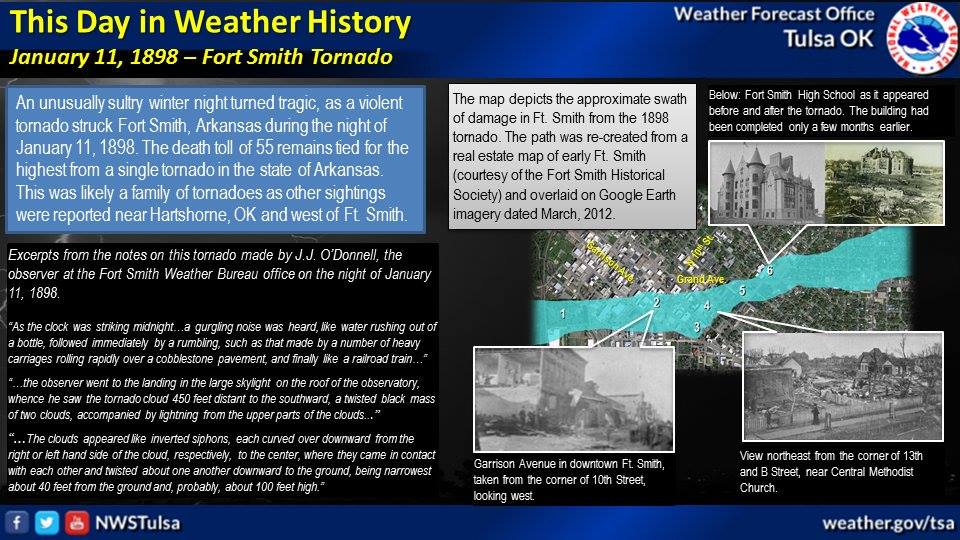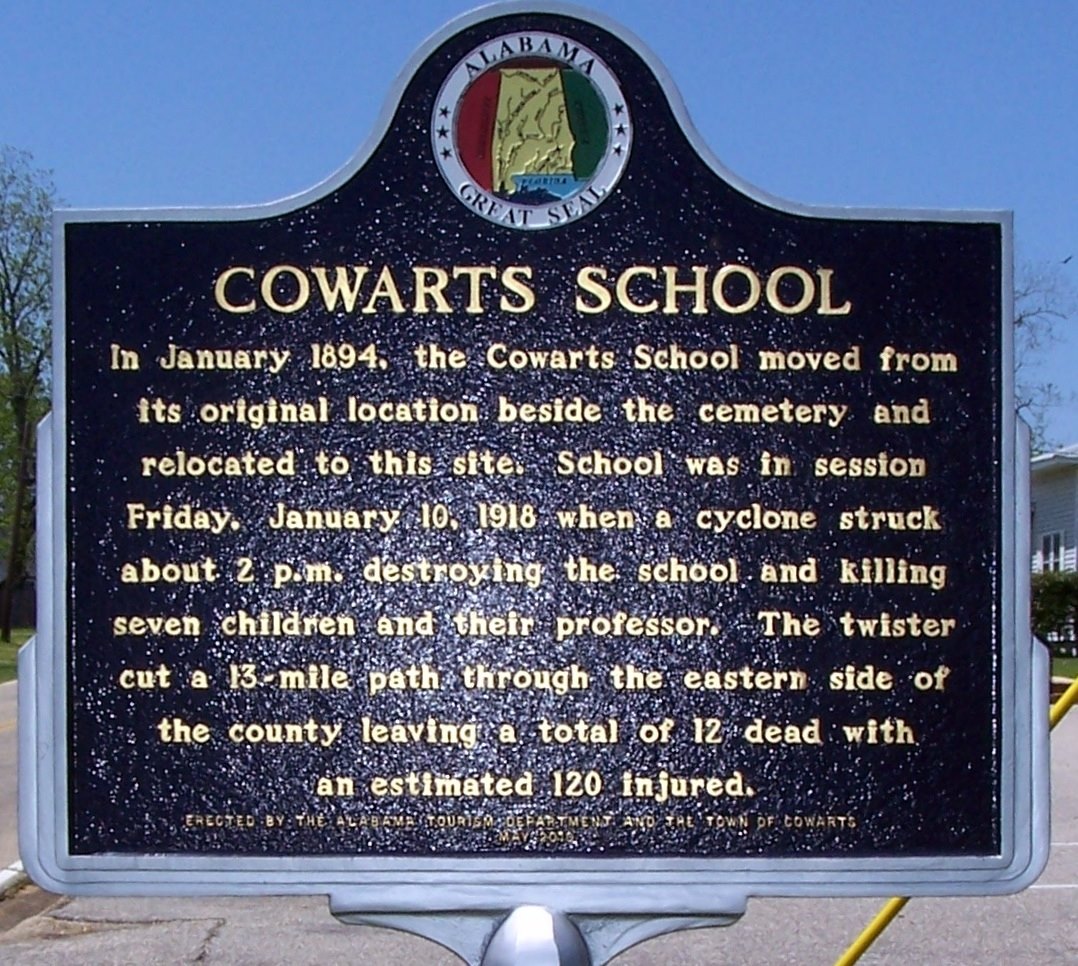Weather History - January 11th
Local and Regional Events:
January 11, 1980:
A strong area of low pressure resulted in strong winds of 35 to 45 mph with gusts to 70 mph across Minnesota on the 11th and 12th. Blowing and drifting snow made roads hazardous or impossible. The strong winds also caused some damage. There were areas in western Minnesota that had a lot of blowing dirt.
January 11, 1995:
A combination of an ice storm, heavy frost accumulation, and strong winds for several days caused widespread damage to electrical systems resulting in power outages across central and north-central South Dakota. The first ice storm occurred on the 11th and the 12th. In the days following, widespread fog developed and resulted in additional heavy deposits of ice and frost on power lines and other surfaces. Much of the damage occurred when strong winds, mainly from the 16 through the 18th, caused the heavily weighted power lines and poles to collapse. Power outages lasted as long as eight days. Several electric cooperatives had never experienced damages of this magnitude. Some traffic accidents resulted from icing, and many vehicles slid off the roads. The property damage was estimated at 3.5 million dollars.
January 11, 2009:
A vigorous but fast-moving winter storm system moved through the Dakotas last night and early today. Although snow accumulations from the storm only ranged from 1 to 4 inches, strong winds behind the system produced significant blowing and drifting snow and widespread blizzard conditions across the area. Reports from trained spotters and law enforcement indicated visibility dropped to below one-quarter mile for several hours and near-zero (white-out conditions) in many rural or unsheltered areas. Sustained north to northwest winds at many locations was 20 to 35 mph, with peak wind gusts as high as 60 to 65 mph. As the arctic airmass surged into the region, temperatures fell some 30 degrees from early this morning to mid-afternoon. Click HERE for webcam images.
U.S.A and Global Events for January 11th:
1898: An estimated F4 tornado struck the city of Fort Smith, Arkansas, just before midnight. The tornado, which touched down about 100 miles southwest of town, killed 55 people and injured 113 others along its track. Click HERE for more information from the Monthly Weather Review.

The image above is from the NWS Office in Tulsa, Oklahoma.
1918: A powerful area of low pressure brought snow and bitterly cold temperatures to Chattanooga, Little Rock, and Shreveport. Birmingham, Alabama, picked up an inch of snow. In far southeastern Alabama, an estimated F3 tornado virtually damaged every building in the town of Webb. The tornado leveled one rural school, killing one teacher and seven students. Please note, the date on the historical marker is an error. January 10th in 1918 was a Thursday.

1963: An F2 tornado was reported in Scott County, Indiana, north of Louisville, Kentucky. It was on the ground for 5 miles north of Scottsburg and damaged or destroyed several homes and barns.
1972: Downslope winds hit the eastern slopes of the Rockies in northern Colorado and southeastern Wyoming. Boulder CO reported wind gusts to 143 mph and twenty-five million dollars property damage. Click HERE for more information from WeatherWise.
2010: Bitter cold temperatures gripped central and southern Florida with lows in the teens and 30s.

Click HERE for more This Day in Weather History from the Southeast Regional Climate Center.